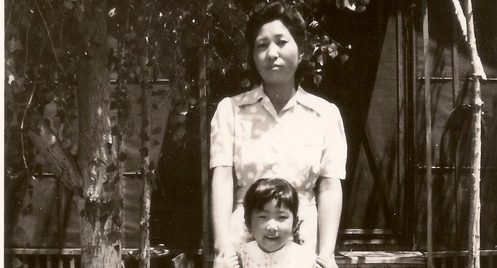The Museum of Modern Arts of New York and the Asian Art Museum in San Francisco honor SF State alumna and Emmy Award-winning filmmaker Emiko Omori this month for her films based on the life of Japanese Americans confined to internment camps during World War II.
MoMA invited Omori to join the retrospective exhibition and feature her films “Rabbit in the Moon,” “Rabbit Left the Moon” and “To Chris Marker, An Unsent Letter,” Feb. 21 and 22 at MoMA’s Documentary Fortnight 2017 International Festival of Nonfiction Films.
Kathy Brew, festival curator, said she has known Omori for many years as a friend and colleague.
“Each of those works is very different and unique, for she has her own aesthetics and her style but the subject is so unique,” Brew said.
“When Rabbit Left the Moon” is a newly edited rendition of “Rabbit in the Moon,” a documentary film released in 1999, based on the personal experiences of Omori’s family and other Japanese Americans sent to live in internment camps during World War II, after President Franklin Roosevelt signed Executive Order 9066.
While “Rabbit in the Moon” is an 85-minute film with a series of interviews and narrations, the newly edited version, “When Rabbit Left the Moon,” lasts only 14 minutes.
Omori said she eliminated interviews and narrations from “Rabbit in the Moon” to create “When Rabbit Left the Moon” in order to differentiate the film from other documentaries about internment camps, by telling the story using visuals instead of words.
“It started as an experiment just for me to try to do a film that didn’t have words,” Omori said. “There’s a lot of (documentaries) out there on the camps and a lot of the footage we’ve seen. What was very interesting though, maybe, you haven’t seen until you saw without words.”

The Asian Art Museum of San Francisco will be showing Omori’s film, “When Rabbit Left the Moon,” from Feb. 18-26.
Karin Oen, an assistant curator of contemporary art at the Asian Art Museum, said “Rabbit Left the Moon” is an important film to remember what the Japanese American community experienced in the internment camps.
“I think her research is the most important part,” Oen said. “She was trying to seek out some of the stories that weren’t as well known in the mainstream and to give voice.”
Omori notes the importance of Japanese American history being told by Japanese Americans who have experienced incarceration.
“Before ‘Rabbit’ there really was not much or maybe nothing on the fact that there had been draft resisters in the camp and that there had been protests in the camps,” Omori said. “What better people to make film about the camps than us? We were there and everybody in ‘Rabbit’ was there. We can tell our story ourselves.”
Pat Jackson, a cinema professor at SF State, met Omori when they both worked at KQED as filmmakers, and contributed to the making of “Rabbit in the Moon.”
“When she said she wanted to make a film about the internment camps, I rolled my eyes and said, Oh Emiko, haven’t we all seen that movie? because there’s been a lot of coverage of the camps,” Jackson said. “Emiko smiled and said ‘Yes, you’ve seen that movie, but you haven’t seen this movie, and I want to tell a different story.’”
Brew called the 75th anniversary of Executive Order 9066 an “unusual synchronicity,” and said she invited Omori because she thought her films have a significant message for society.
“Politically, what’s going on in our country, the film, even though it was filmed in the late 90s, has strong resilience to issues that are going on this very day,” Brew said. “The current conversation on immigration in this country and how her film from another time explores the problem is very relevant today.”







